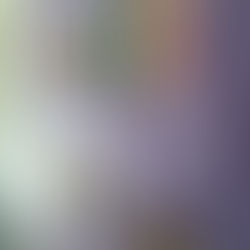Papermaking: "Amalgamation"
During my student teaching at Freeman High School, I introduced Art 5 students to the wonders of papermaking. Papermaking is one of my favorite mediums to teach because it involves creative reuse of discarded materials.
First, I showed students videos about how paper is made (both industrially and in an artist's studio), including the details about how cellulose fibers tangle together to create a sheet of paper. This synthesis of fibers to create a single object inspired my prompt for the project: AMALGAMATION.
After, I demonstrated how to make paper using various materials (newspaper, printer paper, magazine pages, etc.), colors (added with colored tissue paper), and inclusions (leaves, bark, glitter, etc.), the students and I made our own papermaking molds. I had prepared wooden stretchers (thanks to the school woodshop) and bought thrift store frames that we streched window screening across with a staple gun. Finally, we covered the edges with duct tape.
I introduced the following prompt to the students : AMALGAMATION: The action, process, or result of combining or uniting. Combination, union, blend, mixture, fusion, coalescence, synthesis, composite. I asked the students to respond to this prompt using cut or constructed handmade paper and I encouraged them to find a way to interpret this prompt so that it was relevant with their focus they had established at the beginning of the year. We reviewed sketches a few days later and then the students got to making their own paper.
MAKING PAPER
Kerry made lots of small sheets of paper in hues of red/orange.
Sarah experimented in a different way every day, adding different types of inclusions. Her concept was all about her process.
Macon pulled small sheets of paper and layed them down on an armature she made of two lobes of the brain.
FINISHED PAPER
Once the students finished making their paper, we layed it all out on the tables to see what they had accomplished and what they had to work with while they made their sketches into paper collages & constructions.
Taylor made half-spheres using a mesh strainer and paper pulp.
Judah made paper in tons of colors and values.
Sarah's paper showed how much she experimented with inclusions and mixing pulp together.
Logan used dried flower inclusions that held deep significance about her grandmother.
Each sheet of paper itself could be a work of art.
Swirls of pulp in different sizes and colors.
The deckled edges were gorgeous too.
CONSTRUCTING WITH THE PAPER
Next the students got to work cutting, gluing, and constructing their paper into their final works of art. All of their projects were so different, it was amazing to see them work in a variety of ways in the studio.
Judah cut up tiny pieces for his collage.
Logan made intricately cut negative space around her flower inclusions.
Judah gluing his tornado of paper.
Logan took apart an old chandalier that had been in her childhood room so that she could reinvent it.
FINISHED ARTWORKS
The finished artworks were all different and so innovative. It was amazing seeing the various ways the students interpreted the prompt. The texture and look of the handmade paper takes on a different role in each piece.
Amanda used the paper to make a weeping willow tree on an an artmature she made out of a discarded rake and charred wooden base.
Sarah used matte board and a paper grocery bag to create a book. We used glue instead of binding it with thread.
Kerry used her subtle hues of paper to collage a portrait of Aung San Suu Kyi.
Taylor combined her paper bowls into spheres and made a mobile of an imaginary solar system.
Logan used her cut paper with flower inclusions on the deconstructed chandalier to create a unique, ephemeral lantern in honor of her grandmother.
Overall I love the work that came out of this project. The students told me that they really enjoyed papermaking and that they liked the amount of freedom they had to work within the prompt.




















